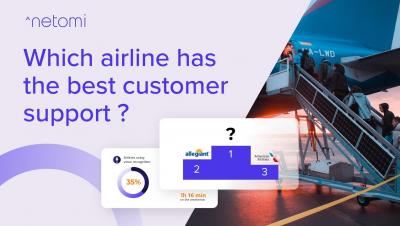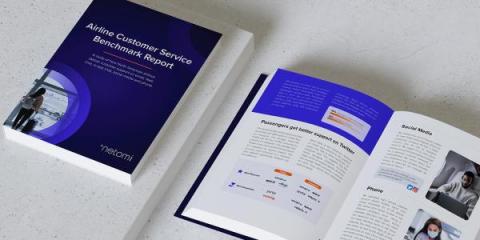Teams | Collaboration | Customer Service | Project Management
Customer Service
Upgrade Your Live Chat Experience with New Bot Images
Human brains are wired to process images 60,000 times faster than text. The age-old adage that “a picture is worth a thousand words” is apparently severely undershooting it. Not only that, but an image has the ability to instantly traverse cultural and lingual barriers. Heard of the painting The Starry Night by Vincent van Gogh?
Who Passed with Flying Colors? Highlights from the 2022 Airline Customer Service Benchmark Report
It’s time to talk travel. This fondly remembered hobby is now on the minds of many, after being pent up due to COVID-19 restrictions. Demand for flights is soaring – Delta Air Lines CEO Ed Bastian reported that March 2022 had been the carrier’s best month for sales in its history, while the four major U.S. airlines (American Airlines, Delta, Southwest and United) are planning summer schedules that are 4% to 20% larger than one year ago.
What is Customer Lifecycle Management?
When you have access to customer data for every stage in the buyer journey, you are able to manage your customer lifecycle better. Therefore, it is important for you to understand the key difference between the buyer journey and the customer lifecycle, so that you can cater to your customer pain points and deliver a positive customer experience every single time.
The Importance of Human Empathy in the Future of CX | Ft. Tania Hoque, Rogers Sports & Media
What is Service Recovery? All Your Questions Answered.
Imagine visiting a particular restaurant once a month. One fine day, you are denied entry despite having made a reservation. The staff informs you that the restaurant is booked out and they are unable to find your reservation. This experience is likely to change your perception of this place and you might reconsider your next visit. But as you make your way out, the manager walks up to you and offers you their best table.
How to Prioritize Customer Needs
When a customer reaches out to your company with a question or problem, they expect immediate attention and prompt responses. In an ideal world, you’d be able to respond to each of them immediately. However, it’s not possible to meet customer expectations every single time. This means that for many customer support teams, there’s almost always a queue full of customer requests waiting to be attended to. So as soon as an agent finishes helping one customer, they move on to another.
13 Best Knowledge Base Examples to Learn From
Companies set up knowledge bases to help customers find answers to their queries faster. However, not all help centers have the desired outcome of providing effortless resolutions to customers. In fact, they end up leaving users more confused and frustrated after accessing a poorly-designed knowledge base. If you’re building your first help center or looking to improve your existing self-service experience, you’re in the right place.
Call Management Software: What is it and why does your business need one?
A call management software handles and optimizes your customer calls. With the help of call management software, customer service managers can listen to recorded calls and provide feedback to agents on improving their performance.
How HIPAA-Compliant Live Chat Improves Patient Satisfaction
What can be more important than patient satisfaction? Patient health naturally, but patient satisfaction isn’t all that far behind. For essentially any healthcare organization, patient satisfaction is the backbone of success, yet all too often it’s left on the backburner. There’s really only one way to improve the happiness and satisfaction of patients – a better experience. But what ultimately entails an ideal patient experience?










